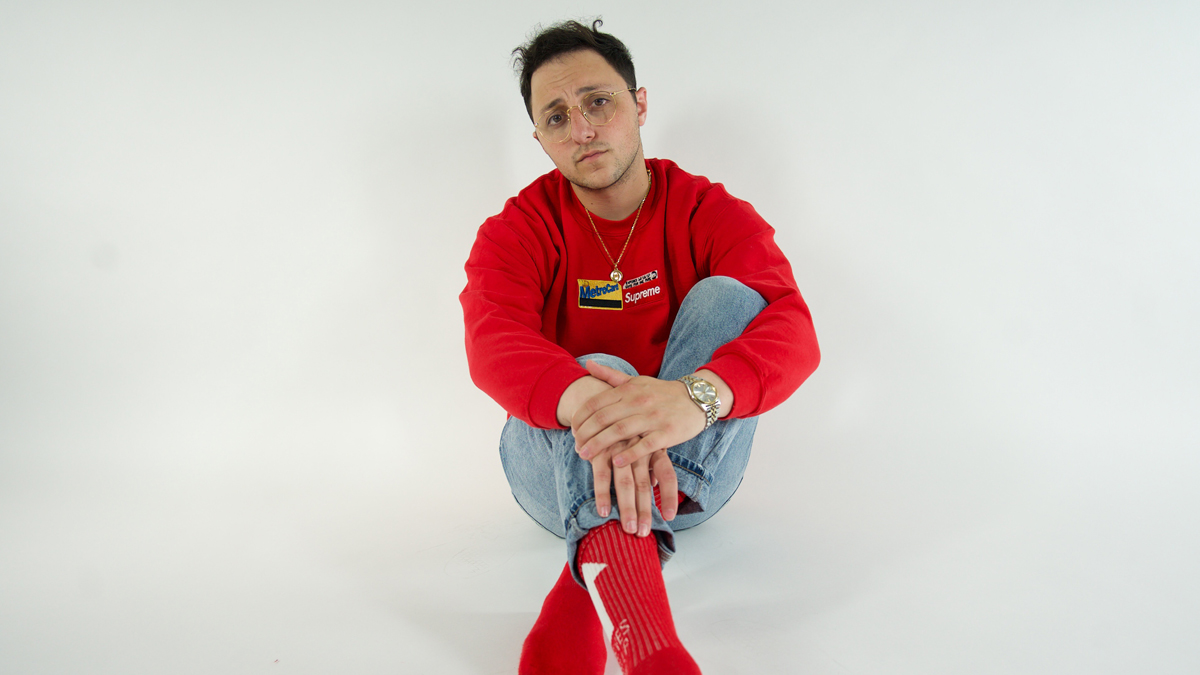Prince Fox: 5 things I’ve learned about music production
The LA-based producer on keeping it simple and focusing on what’s important

Currently residing in Los Angeles, multi-instrumentalist Prince Fox - AKA Sam Lassner - is carving out a name for himself as a go-to pop producer, working with the likes of Hailee Steinfeld, Chantel Jeffries, YG, Rich the Kid and Bia. He’s also remixed for Sam Smith and Florence and The Machine.
His latest move is his debut mixtape, All This Music Vol 1, which draws on his experiences and features vocal contributions from Bella Thorne, Quinn XCII and The Griswolds. “Unlike my album and EPs, this mixtape and the series of mixtapes that are on cue to follow, are not bound to genre or type of collaborator, or feature,” says Prince Fox. “It is simply all this music that I have made, that I love, and that I want to share with you.”
Speaking of sharing, we asked Prince Fox to give you his five most important pieces of music production advice, so let’s get on and hear what they are.
1. Keep it simple, but pay attention to the details
“When songwriting and producing, it is important to always keep the main things as the main things. The more clutter in your song, the more diluted your final product will be, and the harder it will be for the listener to connect and consume it.
“With that said, every detail does matter, but better to focus on the details of what matters most (ie, lead instrument sounds/drums/bass/vocals) than to get lost in layering random nonsense and fills.”
2. Texture is everything
“The most important thing to me when writing to a beat, producing a track, and all the way to the mixing stage is the texture of how every piece of your sonic puzzle fits together. Sometimes your 'best sounds' are not the right sounds for a given song or feeling. For example, a clicky kick drum works great in certain kinds of dance music, but for a pop song with tons of acoustic guitar, something like that would stick out like a sore thumb.
“Additionally, I try and lay tuned ambiences around my main instruments, so that the main thing feels like it has a bed to rest on, and a unique space around it. Texture is everything!”
Want all the hottest music and gear news, reviews, deals, features and more, direct to your inbox? Sign up here.
3. Try and put your consumer hat on
“I find that the more I learn about production, and the better I get, I sometimes fall into the trap of wanting to show off some new trick or technique, regardless of how it serves the overall texture or song. I think it is so important to listen back to your tracks asking ‘does this help the song?’ ‘Do consumers care about this tiny detail I’m forcing in just to flex’ - it's a humbling approach to simplicity, and hierarchy of sounds.
As soon as you start forcing things on yourself, and overthinking, music becomes more formulaic and less fun.
“The same thing applies to mixing - you could be the best guitar player and have a crazy performance, but it should never drown out the vocals (AKA your main thing).”
4. Keep it fun
“As soon as you start forcing things on yourself, and overthinking, music becomes more formulaic and less fun. Keep your studio or workspace feeling like someplace you enjoy being. Whether it's spending a few extra dollars on candles or a pillow or incense, $5 to $20 can change your whole work environment.”
5. Be you
"I keep seeing these "----- type beats" on SoundCloud and YouTube etc - It's amazing to be able to recreate people’s sound, and to learn from it, but it’s imperative that you learn to apply those techniques in a situation, rather than rely solely on them.”

I’m the Deputy Editor of MusicRadar, having worked on the site since its launch in 2007. I previously spent eight years working on our sister magazine, Computer Music. I’ve been playing the piano, gigging in bands and failing to finish tracks at home for more than 30 years, 24 of which I’ve also spent writing about music and the ever-changing technology used to make it.